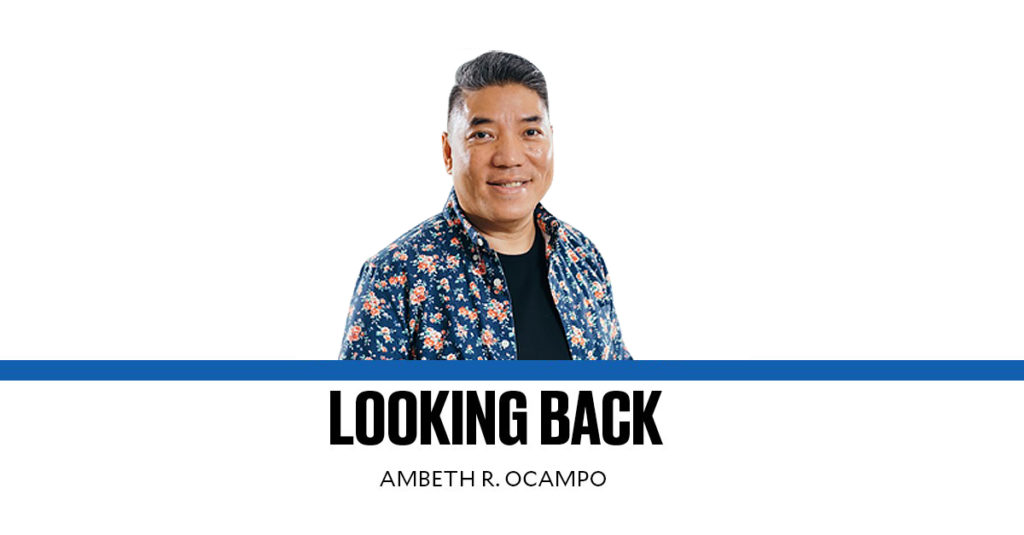Antonio Pigafetta’s account of the first voyage around the world with Ferdinand Magellan has provided me with hours and hours of fun. Now that Yale University has made their French illuminated manuscript available online, I direct my students to the list of words Pigafetta picked up in Cebu that have parts of the body, food, etc. A pity that Pigafetta did not stay long enough to collect more words and classify them as “polite” or “rude” and provide “useful phrases” to avoid the type of miscommunication that left Magellan dead on the shores of Mactan.
Travel accounts of the Philippines are engaging, not just for the description of the people and the country from long ago but for the “useful phrases” listed down as Jean Mallat did in his three-volume “Les Philippines Histoire, Géographie, Moeurs, Agriculture, Industrie Et, Commerce Des Colonies Espagnoles dans l’Océanie” (Paris, 1846) that has recently been republished, translated from the original French, by the National Historical Commission of the Philippines. Mallat provided a compendium of data useful for 19th-century visitors to Manila and beyond: notes on the various islands and provinces, lists of tourist spots or places of interest, notes on wildlife, flora, fauna, export products, tables of customs duties, even the names of native textiles. Worth re-reading from Mallat are the “useful phrases” in Tagalog and Visayan translated to French that provide specific situations like meals:
“Do you wish to take breakfast? What do you wish for breakfast? Bread and milk (tinapay at gatas). Chocolate, biscuits, and butter (Siculate, broas, at mantequilla). Put a napkin on the table and give us some plates, knives, and forks. Wash the glasses. Give a seat to the gentleman. Do you want fresh eggs? (Ibig po ba niño ng itlog na sariua?) Take this large plate away. Let us taste the wine. Open that bottle. Give me something to drink. Is it good or bad?
“It is time for lunch. Set the table and table-cloth. Serve lunch (Maghain na cayo). Put the salt cellar and plates on the table. Wash and rinse the glasses. Scoop us some rice (Sumandoc ca nang canin). Put the stools (taburete) around the table. Have all the guests arrived? Where are the knives, forks, and spoons? Lunch is on the table. Sit at the table. You will sit here (Lumucloc po sila dito). Two stools are lacking here. Boy, go and get two napkins (Bata, humanap ca nang dalauang servillete).
“Do you like sopas ng mestiza? Give me some ginger (laoya). Get some white bread (tinapay na puti) and white rice (caning maputi). Do you like the food? Give us a big plate. What good first dishes (Que buting pagmumula)! But until now you have not drank anything yet. Boy, give the gentleman something to drink. Madame, I drink to your health (Capitang babae, acopoy iinom sa inongatan). Let’s eat the second service (Quitay comain nang mga guisado). Please eat well and tell us what you like. I have no appetite. What do you think of this beef tongue (dila nang vaca), this almondigas, this pritada? Do you want to eat pugo (quail), calapati (pigeon), pabo (turkey) or capon? What do you prefer wing or thigh? Give us some sauce (Biguian mo cami ng zarsa). Give us a glass of wine (Isang copang alac). Let us drink together.
“Do you know how to carve (Marunong ba cayong mag trinchao)? Taste these pickles (achara). Give me that knife. Do me the pleasure of giving me some cari. I prefer a piece of beef or pork. Do you like warm milk (gatas na luto) or fresh butter? I would like some rice (arroz), milk (leche), and fresh cheese (quesong bago). What fine desserts (Que ririquit ng postri)! Fruits go well with the rest of the meal (Ang manga bungay siyang dapat sa calahatan). Give me some strong liquor (licor na matapang). Give the gentleman a clean plate. Clear the table (Nuhat na ang mesa). Let us have a walk (Tayoy mag si pasial sa linang). I am sleepy (Acoy nag tutuca).
Everything from the various dishes to the post-prandial walk is detailed in these “useful phrases” in Tagalog and Visayan. As a primary source for historians, this travel guide helps us recreate life in the 19th-century Philippines, in the same way, that life in the 21st-century Philippines will be recreated from online sources like Tripadvisor. One day, we can even turn the tables and mine Filipino travel accounts of foreign countries, starting from Jose Rizal, Marcelo del Pilar, and much more.
Comments are welcome at aocampo@ateneo.edu
